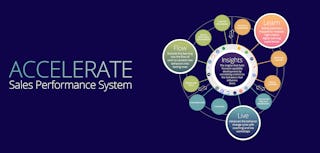Becoming a Trusted Advisor Can Earn You a Seat at the Table

"The hardest thing about B2B selling today is that customers don’t need you the way they used to.”
That is the first sentence of “The End of Solution Sales,” an article about the changing environment in business-to-business (B2B) sales that appeared in the July 2012 issue of Harvard Business Review.
The End of Solution Sales
At the heart of the matter lies the fact that buyer behaviour has been radically altered by the Web, even in just the last few years. We have all seen the now magical statistic many times that buyers are 60% of the way through the buying process before they consult with a salesperson.
Moreover, the buying process itself now typically has more decision makers, often involving a committee that must reach consensus, instead of a single contact. This adds delays to the selling process, resulting in slower pipeline velocity, more stalled deals, and even the dreaded “no decision” status. Only those who are transactional sellers in a transactional business or those who become trusted advisors have the ear of the right buyers and can move deals through the pipeline effectively.
The problem is, “trusted advisor” status can’t be claimed. It has to be earned — and the only opinion that matters is the buyer’s.
So, what can sales reps do to differentiate themselves and elevate their status with buyers to become trusted advisors? Here are five tips that I’ve found to be most effective in earning your seat at the table where decisions are made:
- You have to be proactive — not just reactive to RFPs — and bring buyers new insights and good ideas.
- You have to shape opportunities rather than wait for specs to be handed down.
- You have to look out for the best interests of buyers, building a reputation for knowledgeable and workable solutions that add value.
- You have to be more consultative than transactional. (This helps even in a transactional environment.)
- You have to balance the pendulum swing in the sales process, knowing when to ask questions and when to provide insights.
What I also get are questions — lots and lots of questions. Buyers tend to bounce ideas off of me. They ask for my views on industry matters. They ask me about my competitors. They’ll also ask whether their competitors are experiencing similar issues and how I’m solving their problems. They see me as a credible resource, a kind of clearinghouse, for best-practise information.
When buyers turn to you with questions, seeking your advice and counsel, it’s confirmation of your status as a trusted advisor. And when that happens, you should soon find yourself at the table, as part of the buying process, shaping opportunities rather than reacting to them alongside a crowd of competitors.

eBook: Becoming a Trusted Advisor Can Earn You a Seat at the Table
DownloadGet industry insights and stay up to date, subscribe to our newsletter.
Joining our community gives you access to weekly thought leadership to help guide your planning for a training initiative, inform your sales strategy, and most importantly, improve your team's performance.






